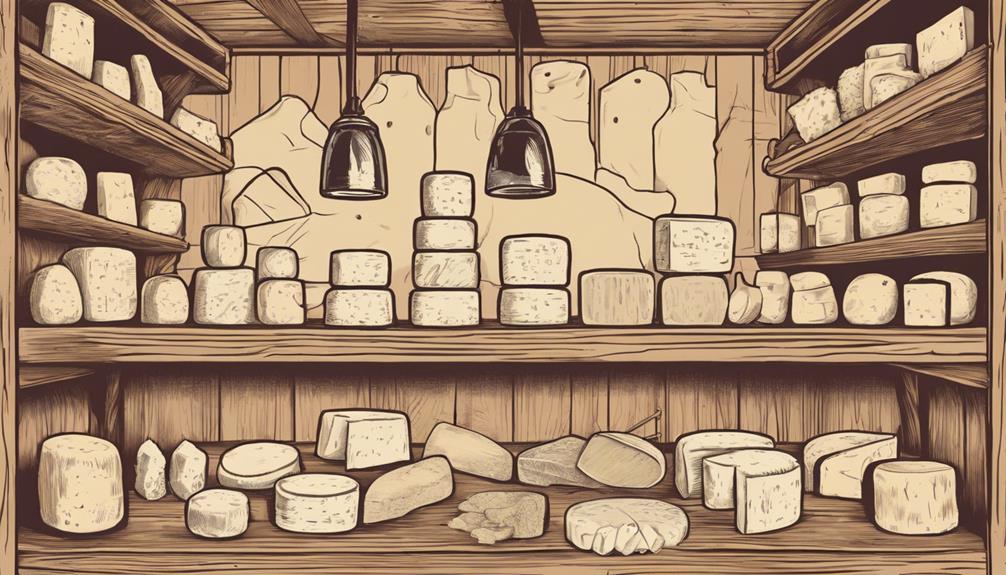How To Become More Self-Sufficient Without Starting a Full-Blown Farm…
Want to start preserving your harvest, making your own soap, or building a backyard root cellar — but not sure where to begin? “Homesteading Advice” gives you instant lifetime access to 35+ practical homesteading books on food preservation, veggie gardening, DIY natural cleaning products (save over $250 per year with this skill alone), brewing, off-grid energy, and a whole lot more…
Click Here To Check It Out Now!
“Hey there! I’ve recently started making my own cheese at home in California, USA. I’m particularly curious about the differences between fresh cheese and aged cheese, as I’ve heard their flavors and textures can be quite distinct. Can you explain what sets them apart and why that happens? Thanks a lot!” — Thanks, Benjamin, San Francisco, USA.
What Distinguishes Fresh Cheese From Aged Cheese?
Hey Benjamin, that’s an excellent question, and it’s fantastic to hear about your new cheese-making adventure! Fresh cheese and aged cheese are indeed quite different, and these differences come down to several factors: time, texture, flavor, and methods of production. Let’s get into it and explore how these cheeses contrast with one another.
Time: The Primary Difference
The most straightforward distinction between fresh and aged cheese lies in how long they have been matured.
- Fresh Cheese: This type of cheese is made and consumed right away. Examples include Ricotta, Mozzarella, and Cottage Cheese. There’s no aging process involved, which means the cheese retains a high moisture content and very mild flavor.
- Aged Cheese: These cheeses go through a maturation process that can range from a few months to several years. Examples include Cheddar, Gouda, and Parmesan. The aging process significantly alters their moisture content, texture, and flavor profile.
Texture: From Soft to Crumbly
Time brings about textural changes due to enzymatic and microbial activity that happens during the aging process.
- Fresh Cheese: Typically, they have a soft, creamy, and sometimes spreadable texture. Think about how fluffy and delicate Ricotta is or how smooth and elastic fresh Mozzarella can be.
- Aged Cheese: These cheeses tend to become firmer over time. The longer they age, the more moisture they lose, making them harder and, in some cases, crumbly. For instance, a young Cheddar is relatively soft and pliable, but a well-aged one becomes quite crumbly and has a distinct sharpness.
Flavor: Mild to Intense
Flavor is arguably the most noticeable difference. During the aging process, complex flavors develop, which are absent in fresh cheeses.
- Fresh Cheese: These bring fresh, mild, and somewhat tangy flavors due to the milk’s natural qualities. They often have a slightly sweet and lactic taste, perfect for salads and light dishes.
- Aged Cheese: Aging introduces varied and complex flavors. Over time, bacteria and molds break down fats and proteins, developing flavors that range from nutty, earthy, and tangy to sharp and pungent. For instance, aged Goudas can develop a caramel-like sweetness, whereas aged Parmesans possess an intense umami character.
Production Methods: From Immediate Consumption to Extended Aging
The difference in aging also means a change in production methods and techniques:
- Fresh Cheese: These cheeses are usually made quickly with a straightforward method. For example, Mozzarella is often heated, stretched, and then formed into balls all in a single day.
- Aged Cheese: The production process involves more steps, and conditions need to be meticulously controlled. After the curds and whey are separated, the cheese is often salted and pressed. It is then stored in a controlled environment where factors like humidity and temperature are carefully managed to ensure optimal aging. For example, Parmigiano-Reggiano must age for at least 12 months, undergoing periodic inspections and turning.
Presence of Microorganisms: The Moldy Matter
Microorganisms play a vital role in cheese aging; they contribute substantially to flavor and texture development.
- Fresh Cheese: Typically, these are made with minimal involvement of aging-specific microorganisms. The pasteurization of milk kills most bacteria, yielding a cleaner and fresher flavor.
- Aged Cheese: Many aged cheeses are intentionally inoculated with specific types of bacteria and/or molds that help develop their characteristic flavors. For example, the blue veins in a Blue Cheese like Roquefort are created by Penicillium roqueforti. Similarly, the rind of Brie is developed using white molds like Penicillium candidum.
Utility and Versatility: Usage in Cooking
The choice between fresh and aged cheese often boils down to the specific culinary requirement.
- Fresh Cheese: These are splendid in dishes that require a lighter touch. They are perfect for salads (think Caprese salad with fresh Mozzarella), spreads, fillings, and desserts (like Ricotta in cannoli).
- Aged Cheese: Given their intense flavors, these cheeses shine when grated over dishes, used in sauces, or simply enjoyed on their own with a good glass of wine. Parmesan on pasta, aged Cheddar in a grilled sandwich, or Gouda paired with fruit are excellent examples.
Examples of Fresh Cheese and Their Applications
- Mozzarella: Excellent in salads and as a pizza topping
- Ricotta: Ideal for lasagna, cannoli, and pancakes
- Feta: Great for Greek salads and Mediterranean dishes
- Cottage Cheese: Perfect as a snack with fruits or in smoothies
Examples of Aged Cheese and Their Applications
- Cheddar: Fantastic in mac and cheese, sandwiches, or as a cracker topping
- Parmesan: Ideal for grating over pasta, risottos, and soups
- Gouda: Delicious in sandwiches, cheese boards, or melted in dishes
- Blue Cheese: Perfect in salads, dressings, and with honey in cheese boards
Final Thoughts…
Benjamin, the journey of cheese-making encompasses a rich tapestry of methods, flavors, and characteristics influenced heavily by time, texture, and production techniques. Fresh cheeses are delightful for their mild flavors and creamy textures, while aged cheeses offer complex, robust flavors that treat the palate to unique experiences. Thank you for reaching out with such a great question, and I hope this sheds light on the distinctions between fresh and aged cheese to inspire your cheese-making journey!

